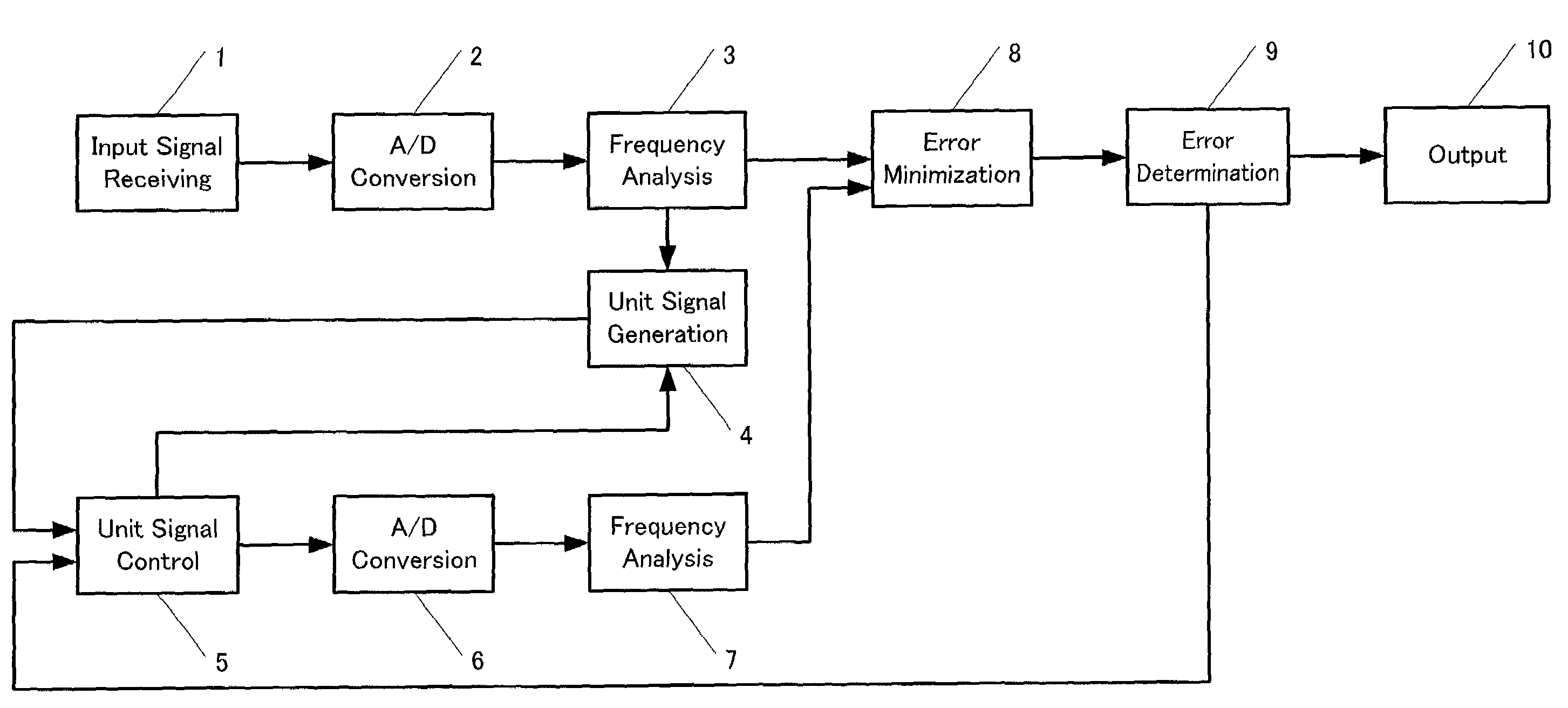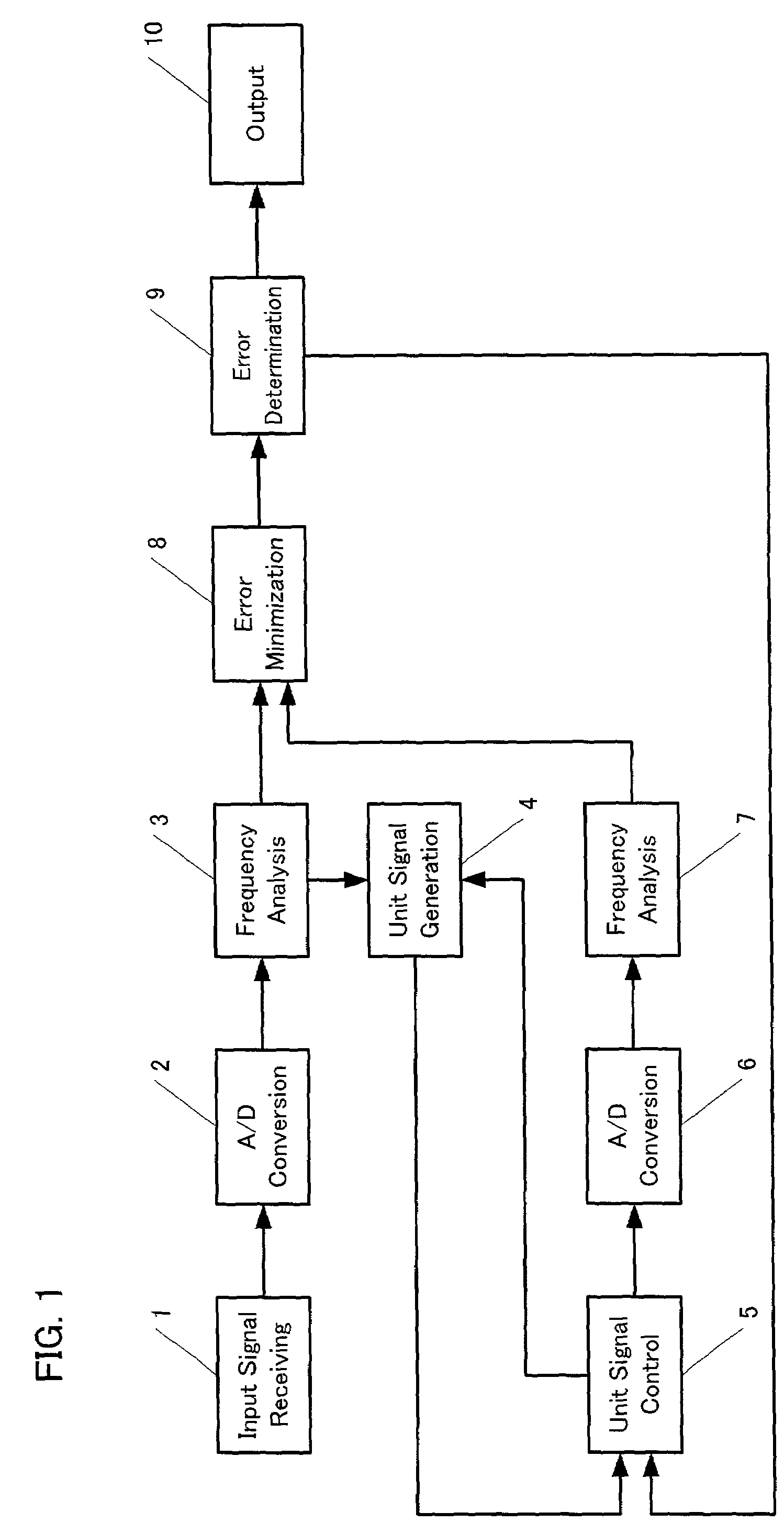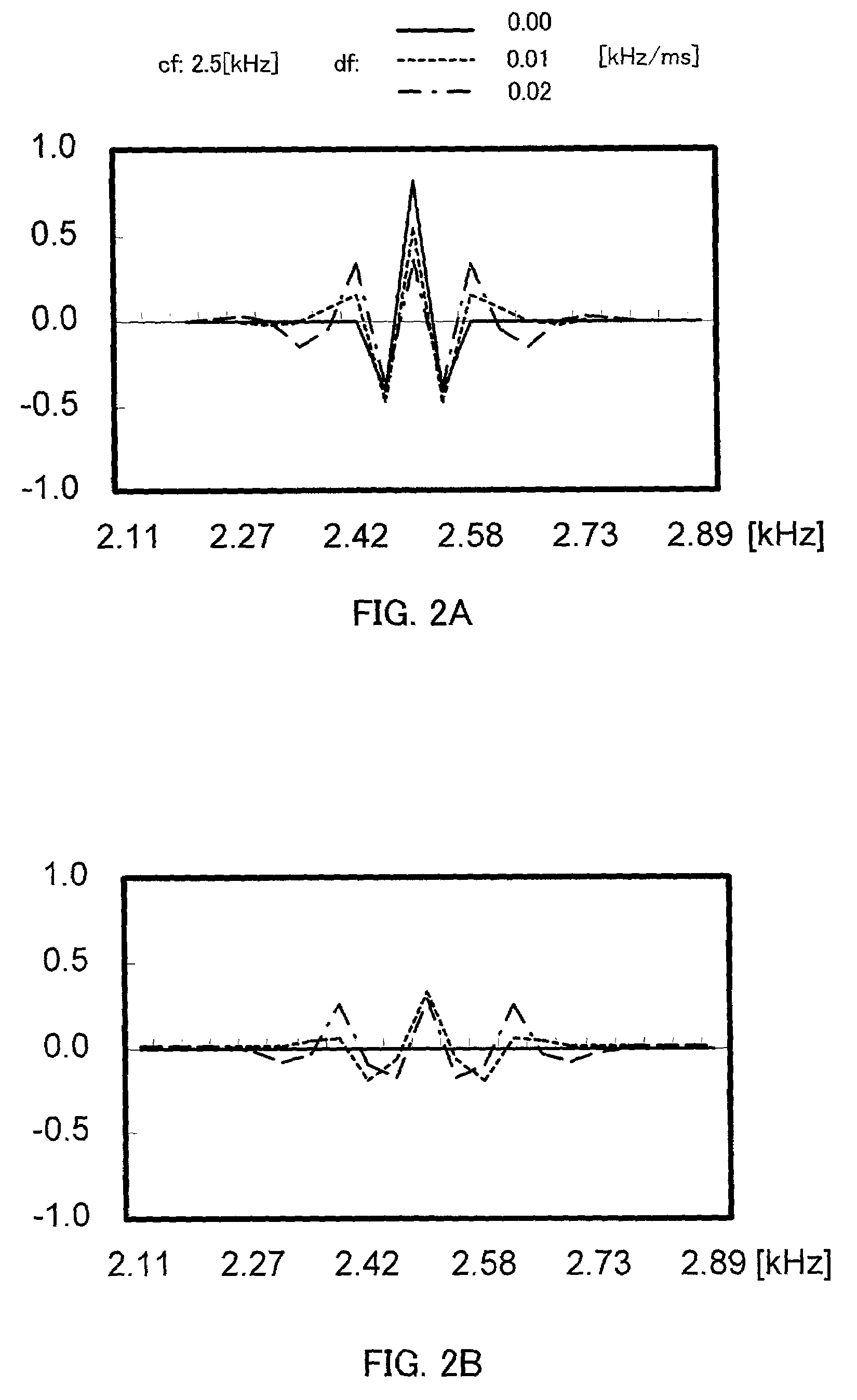Apparatus and program for separating a desired sound from a mixed input sound
- Summary
- Abstract
- Description
- Claims
- Application Information
AI Technical Summary
Benefits of technology
Problems solved by technology
Method used
Image
Examples
first embodiment
2.1 Structure of First Embodiment of Sound Separation Apparatus
[0086]FIG. 8 shows a block diagram of a sound separation apparatus 100 according to the first embodiment of the invention. The sound separation apparatus 100 comprises a signal input block 101, a frequency analysis block 102, a feature extraction block 103 and a signal composition block 104. The sound separation apparatus 100 analyzes various features contained in a mixed input signal in which noises and signals from various sources are intermixed, and adjusts consistencies among those features to separate a target signal. Essential parts of the sound separation apparatus 100 is implemented, for example, by executing program which includes features of the invention on a computer or workstation comprising I / O devices, CPU, memory, external storage. Some parts of the sound separation apparatus 100 may be implemented by hardware components. Accordingly, the sound separation apparatus 100 is represented in functional blocks ...
second embodiment
2.6 Second Embodiment of Sound Separation Apparatus
[0141]Feature parameters extracted in each layer is not limited to the combination noted above with the first embodiment of the invention. Feature parameters may be allocated to each of local, intermediate and global feature extraction layers according to the type of features. Any other features which may be used for feature extraction include on-set / off-set information or intonation. These feature parameters are extracted by any appropriate methods and are updated among the layers to accomplish the consistency in a same manner of the first embodiment.
[0142]The second embodiment of the invention may utilize sound source direction as a feature by comprising two sound input terminals as shown in FIG. 16. In this case, a sound source direction analysis block 911 is additionally provided as shown in FIG. 16 to supply the source direction information to the feature extraction block 915. Any conventional method for analyzing the sound sou...
third embodiment
2.7 Third Embodiment of Sound Separation Apparatus
[0150]FIG. 18 illustrates a third embodiment of the sound separation apparatus 1000 according to the invention.
[0151]The mixed input signal is collected by two or more sound input terminals (two microphones L and R 1001, 1003 are shown in FIG. 17). Frequency analysis block 1005 analyzes the signals with FFT collected through the microphones 1001, 1003 separately to obtain f-t map.
[0152]Feature extraction block 1015 comprises instantaneous encoding layers as many as the number of the microphones. In this embodiment, two instantaneous encoding layers L and R 1017, 1019 are provided corresponding to the microphones L and R respectively. The instantaneous encoding layers 1017, 1019 receive the f-t map and calculate the frequencies and amplitudes of the frequent component candidate points, and calculate time variation rates of the frequencies and amplitudes. The instantaneous encoding layers 1017 and 1019 also check the consistency with t...
PUM
 Login to View More
Login to View More Abstract
Description
Claims
Application Information
 Login to View More
Login to View More - R&D
- Intellectual Property
- Life Sciences
- Materials
- Tech Scout
- Unparalleled Data Quality
- Higher Quality Content
- 60% Fewer Hallucinations
Browse by: Latest US Patents, China's latest patents, Technical Efficacy Thesaurus, Application Domain, Technology Topic, Popular Technical Reports.
© 2025 PatSnap. All rights reserved.Legal|Privacy policy|Modern Slavery Act Transparency Statement|Sitemap|About US| Contact US: help@patsnap.com



